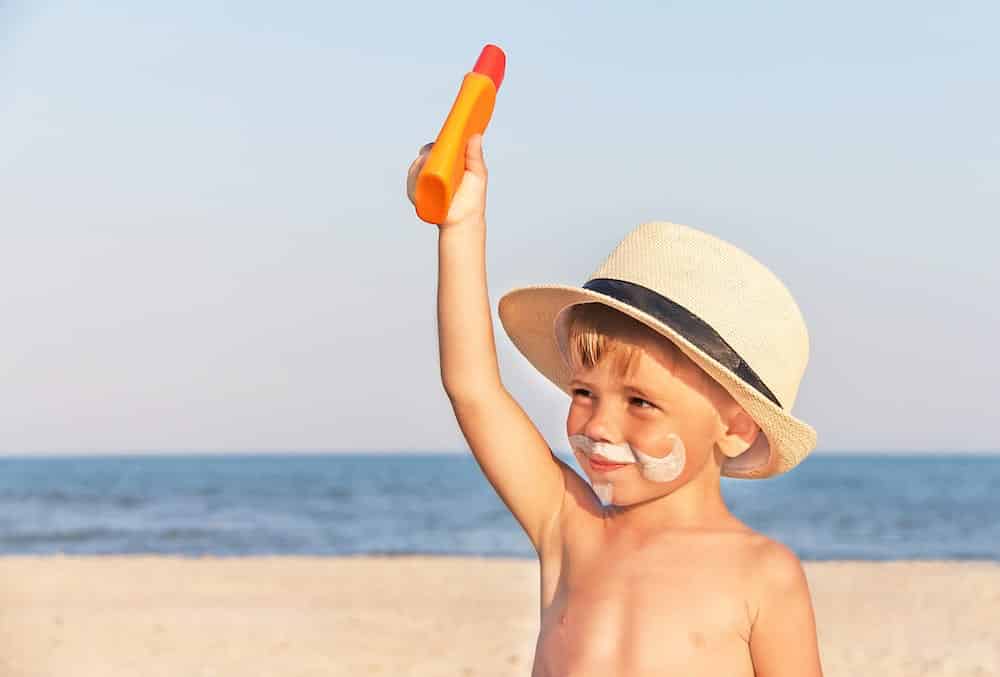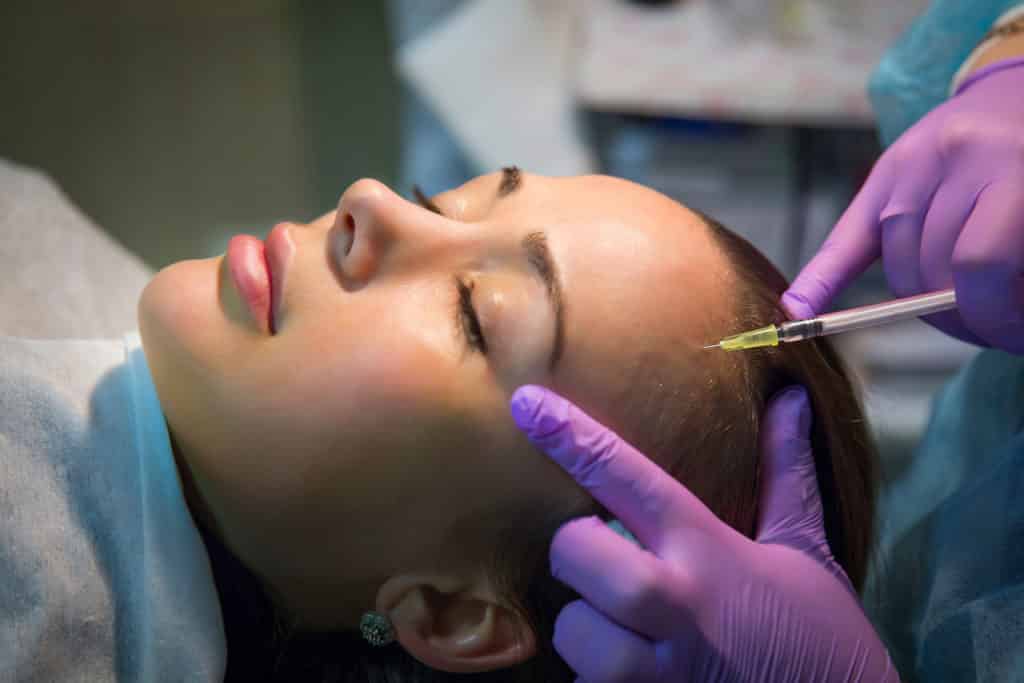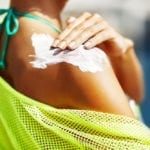

Even though we often refer to our babies and children as mini-me’s, their little bodies respond much differently to environmental factors, chemicals, pollution, medications (the list goes on) than ours. This is especially true for sunscreen. The best sun protection for babies and children depends a lot on age.
Sunscreens come in two flavors: physical and chemical blockers. Physical sunblocks (also known as mineral sunblocks) contain zinc oxide and/or titanium dioxide. These ingredients sit on the skin and reflect the sun’s rays (for the most part, though they also absorb some UV light). Zinc oxide is superior to titanium dioxide, and I always advise my patients to look for one with higher zinc oxide content.
In contrast, chemical sunscreens absorb UV rays, rather than reflect them. (You can learn more about sunscreen in general in this blog post.)
Sun protection for babies and children
For babies under six months of age, it is best to avoid chemical sunscreen as babies have higher systemic absorption compared to older kids and adults.
Because babies do not have the fully-developed heat regulatory abilities of older kids, it’s ideal to keep them indoors or entirely shaded, as prolonged exposure to heat is not well tolerated.
However, a small amount of mineral sunblock is safe if there is no way to avoid the sun (after all, zinc oxide is the same ingredient in diaper paste!). Keeping babies in sun-protective clothing is most important at this age.
After six months of age, physical sunblocks are ideal as they work immediately when applied to the skin and are not systemically absorbed. As your babies grow, certain chemical sunscreens are good options as they may offer excellent broad-spectrum coverage to both UVA and UVB rays.
However, a word of caution: Most chemical sunscreens sold in the US do NOT have excellent UVA coverage. The best chemical sunscreens contain UVA-blocking ingredients like Mexoryl or Tinosorb and can be found readily outside the US.
Our sunscreen recommendations
Some of our favorite drugstore sunblocks for kiddos are widely available. They include:
- Neutrogena Pure & Free Baby – 21% zinc oxide
- Aveeno Baby Continuous Protection Sensitive Skin – 21% zinc oxide
- Thinkbaby Safe Sunscreen – 20% zinc oxide
- Blue Lizard Baby – 10% zinc oxide, 5% titanium dioxide
Some final tips for you:
- Water-resistant doesn’t mean waterproof. Always reapply, especially after swimming, rain exposure, and any activity that works up a sweat.
- Avoid being out in the sun from 10am to 2pm when the sun’s rays are strongest.
- If choosing a chemical sunscreen, make sure to apply it to skin 15-20 minutes before going outside to allow full absorption.
- The best sun protection for babies: clothes! Protect them with a hat, sunglasses (if they’ll keep them on!) and sun protective clothing.
What is best for your children?
If you would like more information on the best products to keep your babies sun-safe, let us know at your next appointment. We have a selection of chemical-free sunscreens for sale in our office.
Posted In: FAQ
Related Posts

February 28, 2019
The Five Most Common Questions About Botox
Botox has become a familiar, household name for anyone who cares for their skin. In fact, it is often the first treatmen...

December 4, 2018
Sclerotherapy Treatment for Spider Veins: Everything You Need to Know
Sclerotherapy treatment for spider veins is an effective option for this unattractive condition. Spider veins are damage...

October 15, 2018
The Difference Between CoolSculpting versus Emsculpt
There are endless articles about CoolSculpting versus Emsculpt and which is better. They are two types of body contourin...


